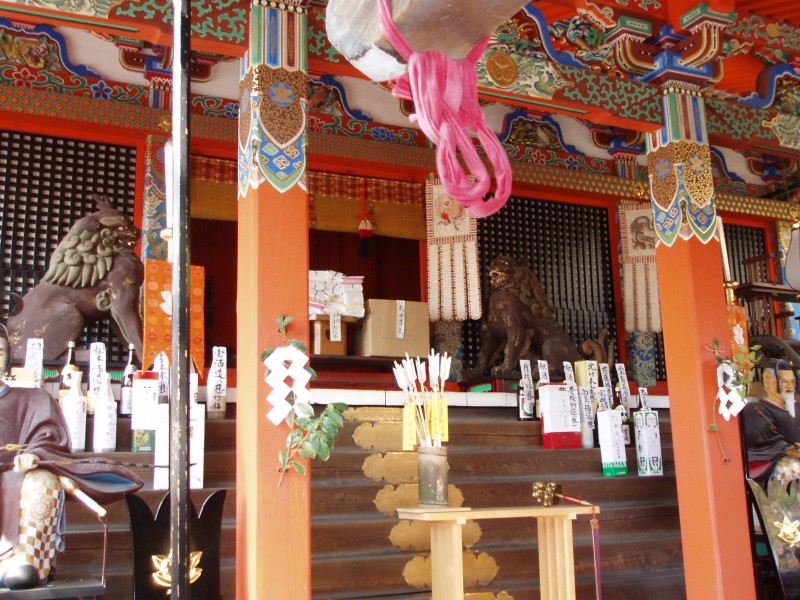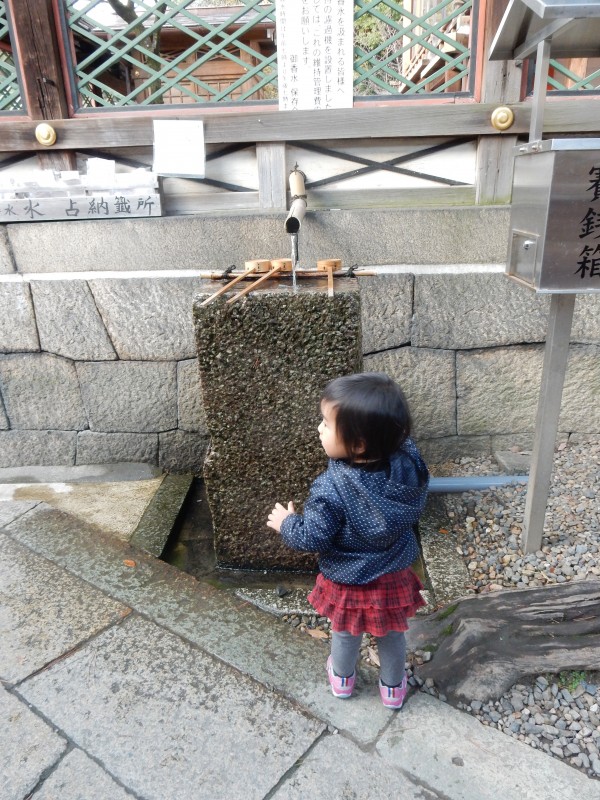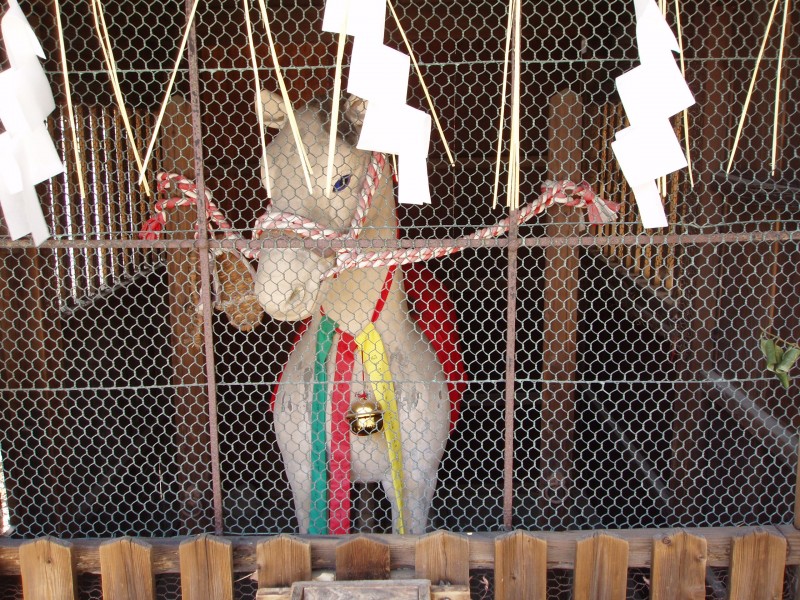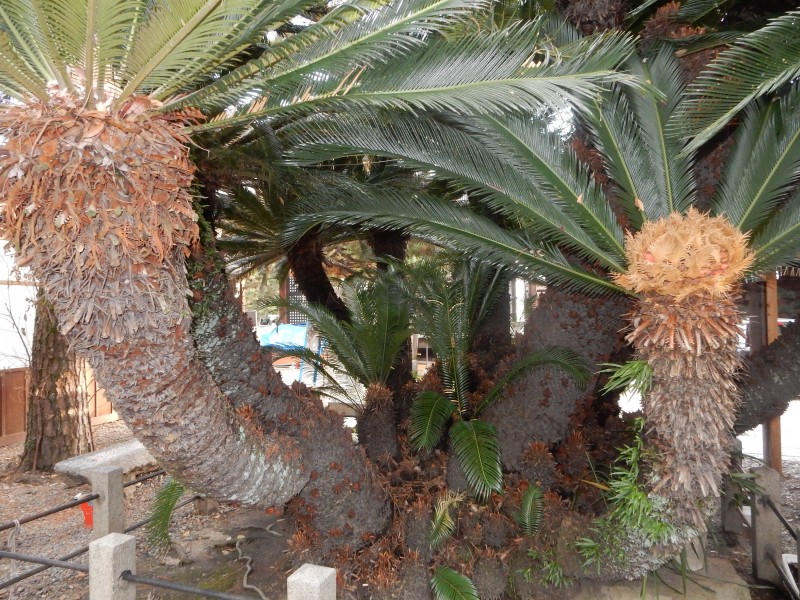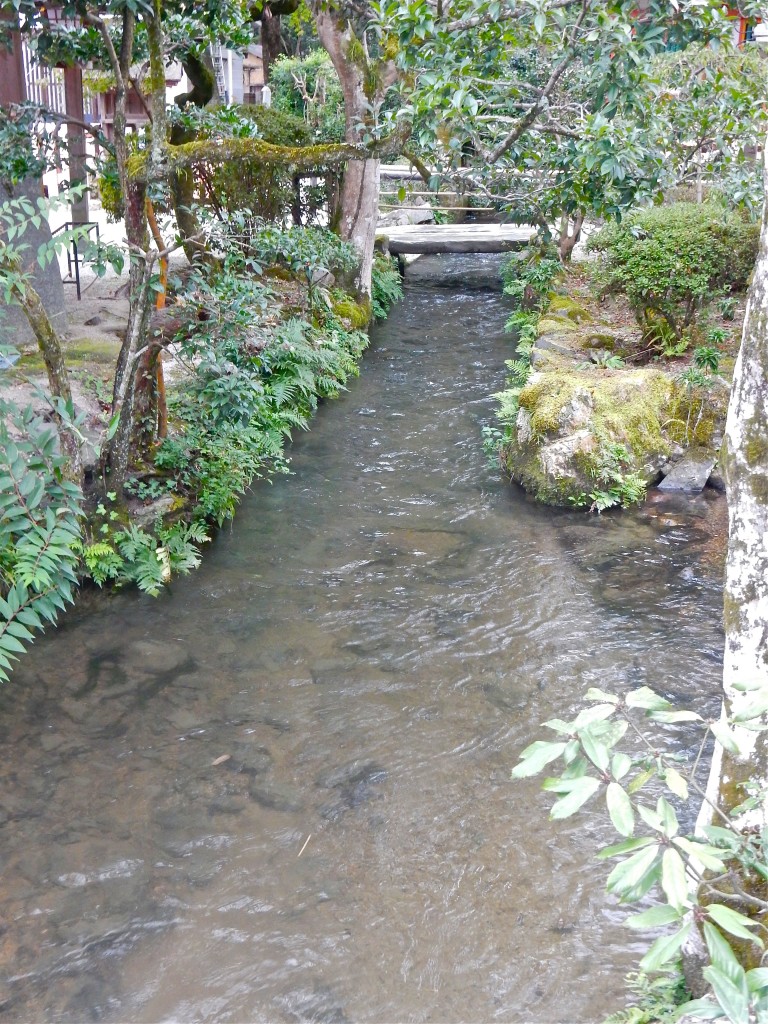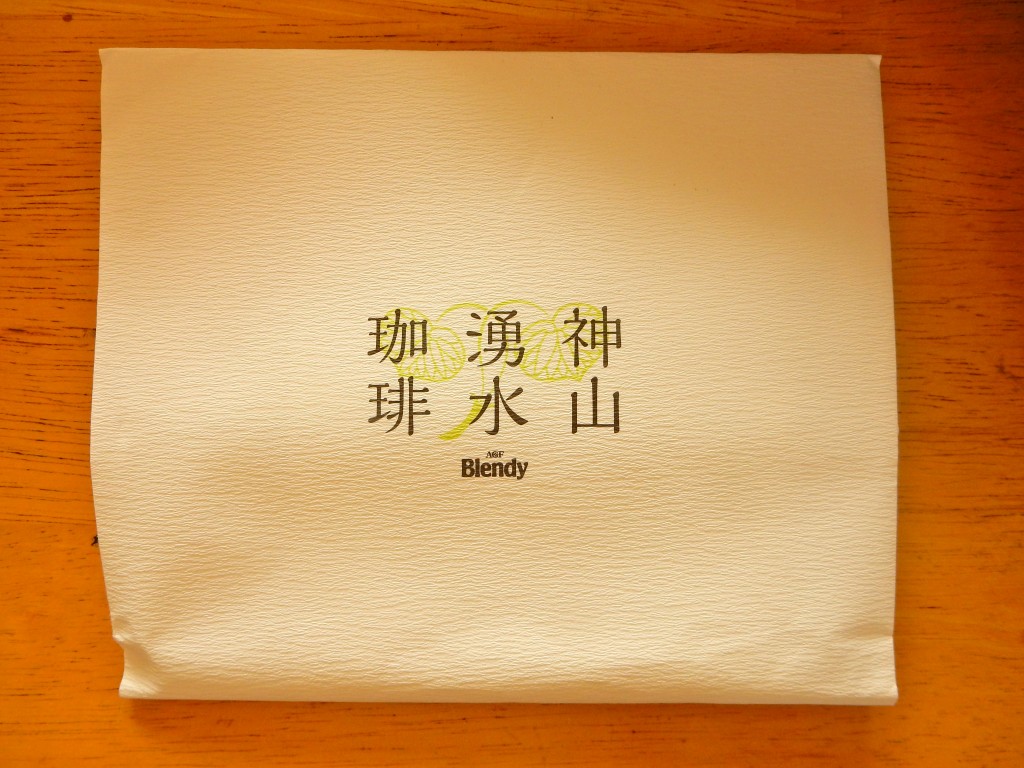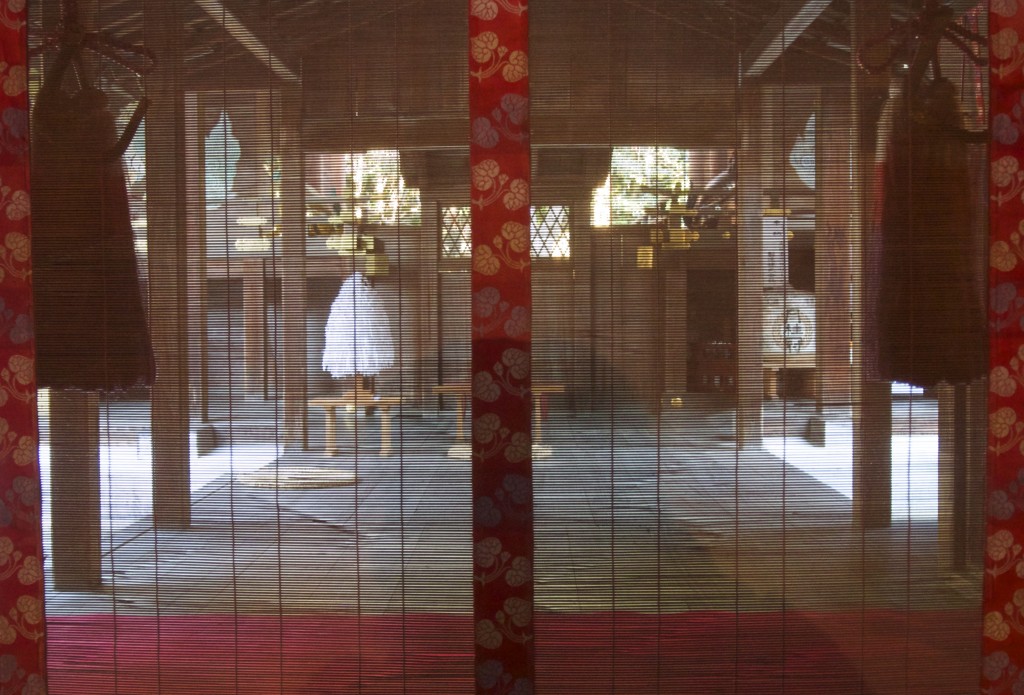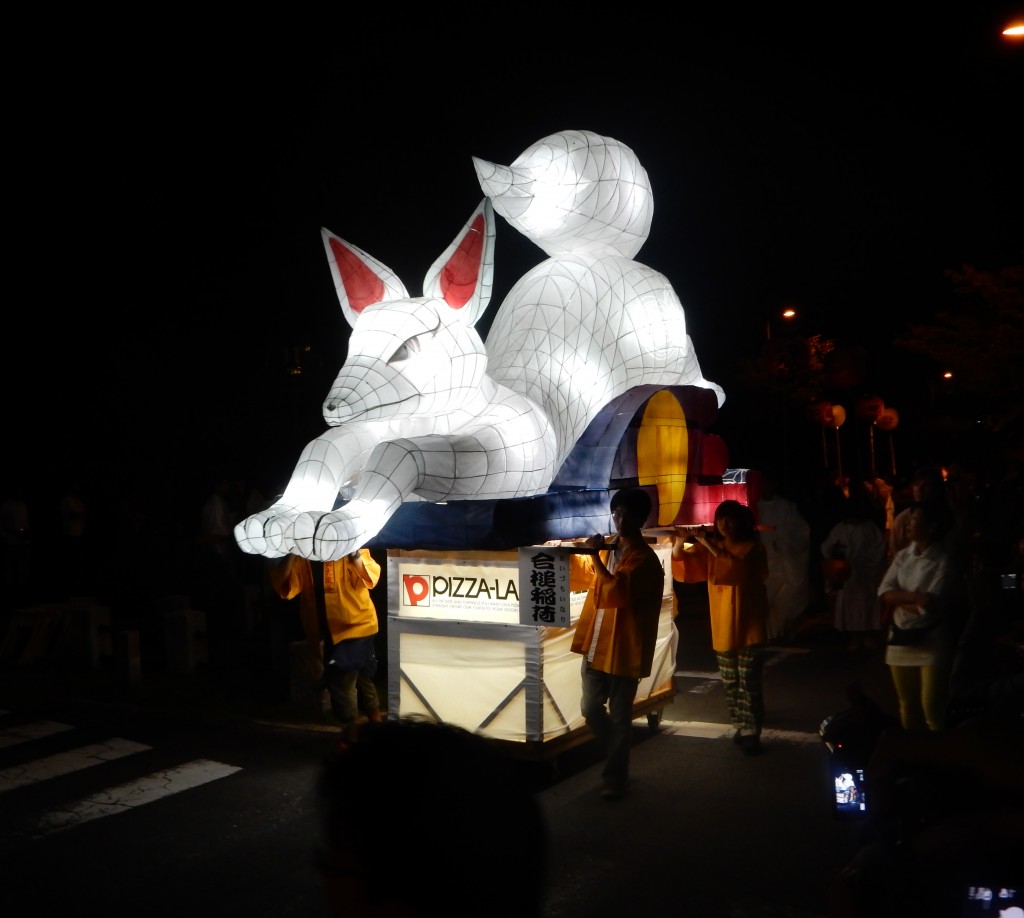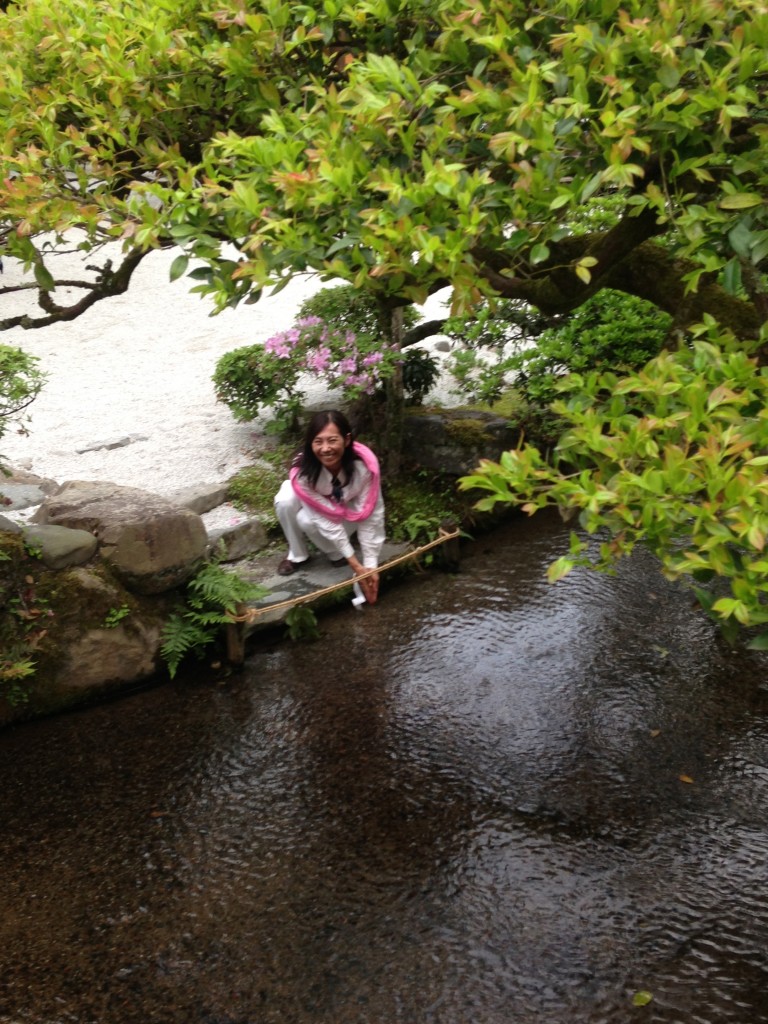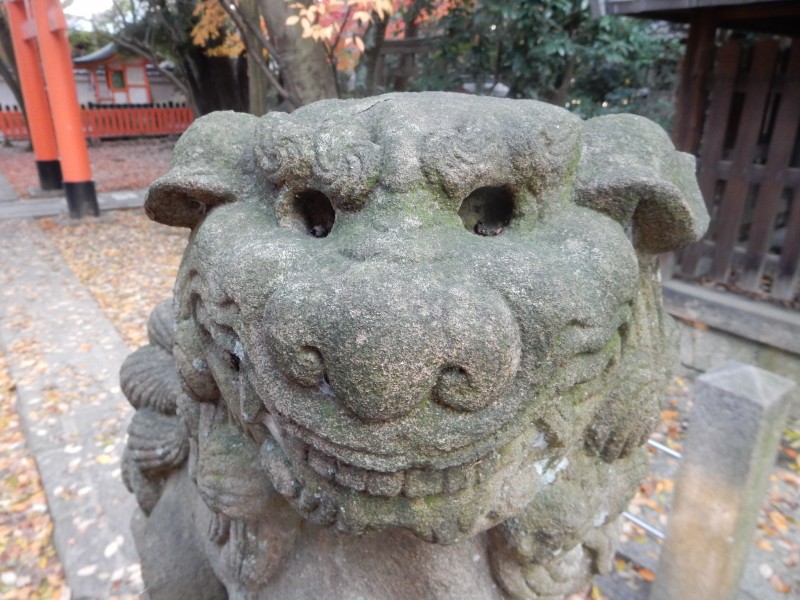 Gokonomiya Shrine is not one of the better-known shrines of Kyoto, though in any other town it would certainly be a focus of attention. It was first mentioned in 862 as having been restored – which means it dates from an earlier time. It is said to have been built on the site of an imperial villa (Kyoto was founded in 794). The imperial connection is reflected in its enshrined deities, the legendary Empress Jingu and Hachiman (also known as her son, Emperor Ojin).
Gokonomiya Shrine is not one of the better-known shrines of Kyoto, though in any other town it would certainly be a focus of attention. It was first mentioned in 862 as having been restored – which means it dates from an earlier time. It is said to have been built on the site of an imperial villa (Kyoto was founded in 794). The imperial connection is reflected in its enshrined deities, the legendary Empress Jingu and Hachiman (also known as her son, Emperor Ojin).
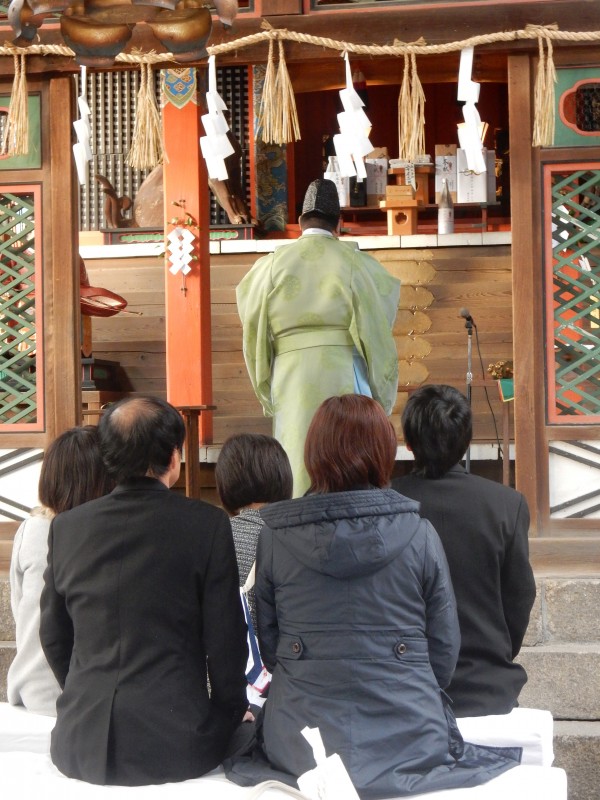
Ritual for the first shrine visit of a baby (Hatsu miyamairi)
According to the noticeboard at the shrine, spring water gushed out of the land in 863 with a particularly fresh aroma – hence the name of the shrine, which could be translated as Shrine of Fragrance. The water acquired a reputation for its protective and curative properties, and it is still treasured by parishioners who bottle it for home consumption.
Though the spring dried up in Meiji times, it was restored in 1982 and in one of those typical Japanese listings, it’s now included in the top 100 natural water sources of Japan. Unsurprisingly, the shrine has close relations with the nearby saké breweries which were established in Fushimi because of the purity of the underground water. Kizakura and Gekkeikan are the best known.
The shrine’s entrance gate was relocated from Fushimi Castle in the early Edo period, but the pride of the shrine is its fine Momoyama colouring. The Honden (Sanctuary) was built in 1605 and the Haiden (Worship Hall) in 1612. The bright distinctive paintwork, with its colourful decorations, were renewed in 1990.
In modern times the shrine served as headquarters for the Satsuma Clan at the Battle of Toba-Fushimi (1868), though fortunately suffering no damage. Other items of interest include an astonishingly vigorous ‘sotetsu’ tree, normally associated with tropical climes, a collection of rocks that once belonged to Hideyoshi’s Fushimi Castle, and a stone garden by Kobori Enshu. There’s also a white horse statue standing ever ready for the kami to mount, and an Ema Hall with some fine old votive plaques donated by various groups in the past.
In the past the shrine was visited by the likes of Hideyoshi and the emperor. It’s said many from the Tokugawa lineage used the protective spring water for their baby’s first bath. People of Fushimi are said to be very attached to their shrine, and the grand festival which lasts nine days is of greater importance to locals than even the grand Gion Festival.
Gokonomiya may not be among the city’s most prestigious shrines, but it’s well worth a visit and there are quiet corners of the large shrine where one can sip the curative water at peace and perhaps write a haiku or two. as suggested by a stone monument commemorating Basho and Kyorai’s poetry here in 1694). The first is by Basho and the reply by Kyorai (tr. Blyth).
In the plum blossom scent
the sun pops up —
a mountain path
‘Yes, yes!’ I answered,
But someone still knocked
At the snow-mantled gate
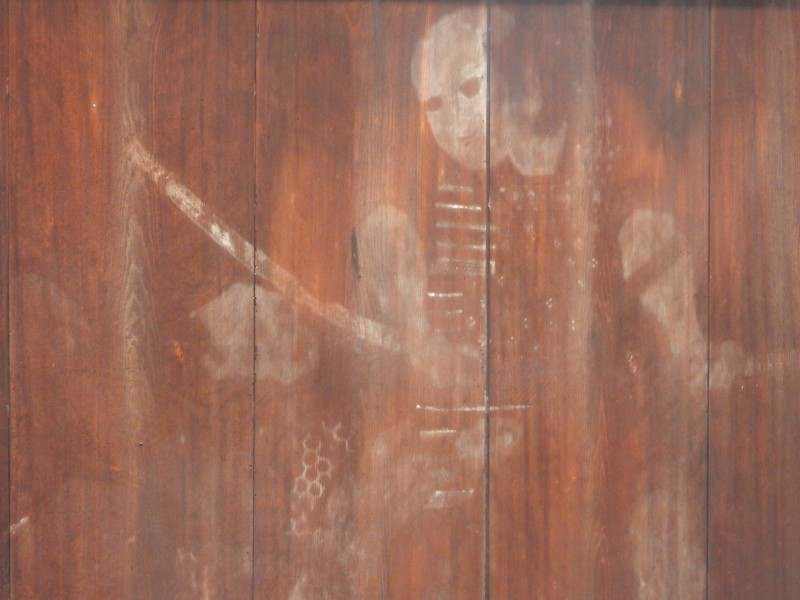
The ghostly outline on an ema donated to the shrine in the past

